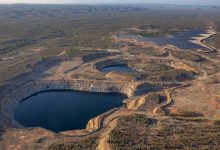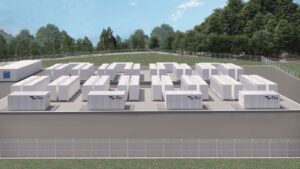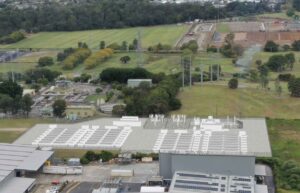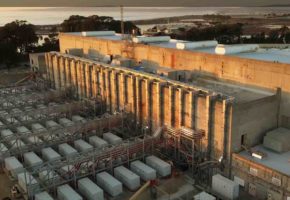The New South Wales government is seeking to make changes to the legislation underpinning state’s renewable infrastructure roadmap, with the big talking point in the industry focused on proposed adjustments to the length of storage.
Amendments introduced to the lower house week last flagged a host of changes, including the ability for the energy minister to change the definition of long duration storage from the current definition of eight hours.
The proposal put the wind up the pipes of some pumped hydro aspirants, who are already struggling to get their projects over the line in the face of falling battery costs, soaring public work costs, and the unsuitability of the current package of incentives.
However, RenewEconomy understands that the changes have been made to provide maximum flexibility to the minister, and the long term target storage capacity of 2GW is now supported by a stated storage goal of 16 GWh, or at least eight hours storage.
NSW, like any other state, is going to need a mixture of short and long duration storage to fill the gap created by the expected closure of the entire coal fleet over the next decade.
Short term storage – between two and four hours – has been relatively easy to obtain give the improvements in battery technology, falling costs, new markets and greater demand. And, because battery technologies are modular, they are quicker to build.
It’s been a different story for long duration storage, defined as a minimum of eight hours, with the first tender seeking up to 600 MW of capacity earlier this year securing just 50 MW, a battery proposed by German energy giant in south west NSW that will be the first in the country with eight hours storage.
Last week, NSW secured another three big batteries, including the country’s first gigawatt-scale four hour battery in the first shorter duration “firming” tender held with the federal government that is designed to help fill the gap created by coal closures, in this case the impending shutdown of the 2.88 GW Eraring generator in 2025.
That auction succeeded, developers say, because the mechanisms proposed – annual annuities and long term energy service agreements (LTESAs) – were sufficient to eliminate the “worst case” scenarios of the projects and should help them to get cheaper finance, and even cheaper equity.
They will likely work for the other 9GW of dispatchable capacity that the federal government is now seeking through its expanded Capacity Investment Scheme, but the path is still not clear for pumped hydro, which takes longer to build and has higher up front capital costs, and less flexibility to play in multiple energy markets.
And because the LTESAs and annuities can’t completely eliminate the worst case scenarios risks for pumped hydro, it is thought that battery storage will continue to dominate those long duration storage auctions.
That could be confirmed in coming weeks with the release of the latest tender for generation and long duration storage. But the NSW government has already flagged a “plan B” using the proposed Energy Services Corporation to host a different platform and mechanism that could de-risk pumped hydro projects.
The part of the bill that alarmed pumped hydro proponents was the proposal to allow the minister to declare “a different (storage) period in addition to the eight hours” prescribed in the legislation.
This was thought to suggest a reduction that would effectively kill pumped hydro storage, which works best at a minimum eight hours. But RenewEconomy understands that the storage time could just as easily be raised as lowered depending on the circumstances.
The added flexibility was recommended by the recent energy “check-up” commissioned by the state government ahead of the planned Eraring closure, which noted the slow development of long duration storage.
In a second reading speech in the lower house last week, the parliamentary secretary for renewable energy Trish Doyle said there will be full consultation with the industry before any changes are made.
“The overall objective of these amendments is to accommodate longer periods where the demand for electricity is greater than the supply, hence this amount of energy storage is needed,” Doyle said.
“The Minister for Energy will decide whether to make a regulation in 2024 to specify a different duration, following a review by AEMO Services Limited.
“Before making any decision about whether to specify a minimum duration different to the current eight hours, the Minister for Energy will consult with industry as part of the review.
“Together, the long-duration storage amendments in the bill provide flexibility to the Consumer Trustee in how it tenders for long-duration storage to meet the reliability standard.”
There are around half a dozen different pumped hydro projects being developed in NSW, including by energy majors Energy Australia (Lake Lyell near Bathurst), AGL (Bell’s Mountain), and Alinta (Oven Mountain), among others including Walcha Energy’s Dungowan project.
Australia’s biggest pumped hydro project is Snowy 2.0, but this been beset by controversy over its economics and environmental impacts, and by significant and multiple cost blowouts, and delays.
The first new pumped hydro project in Australia for 40 years is expected to be completed at Kidston in north Queensland, where Genex Power says it is on track to deliver a 250MW, eight hour facility in and around an old open pit gold mine on time and (more or less) within budget by the end of next year.
However, numerous other pumped hydro projects – particularly a handful in South Australia, where long duration storage is more urgently needed as the state heads towards “net” 100 per cent renewables in coming years – have not gone ahead, despite a various of proposed support and underwriting schemes.
That long duration storage is likely to be one of the biggest challenges for the supersized Capacity Investment Scheme, which is now seeking 9GW of “dispatchable” capacity, as well as 23GW of new wind and solar capacity in the next four years.
See RenewEconomy’s Pumped Hydro Energy Storage Map of Australia










